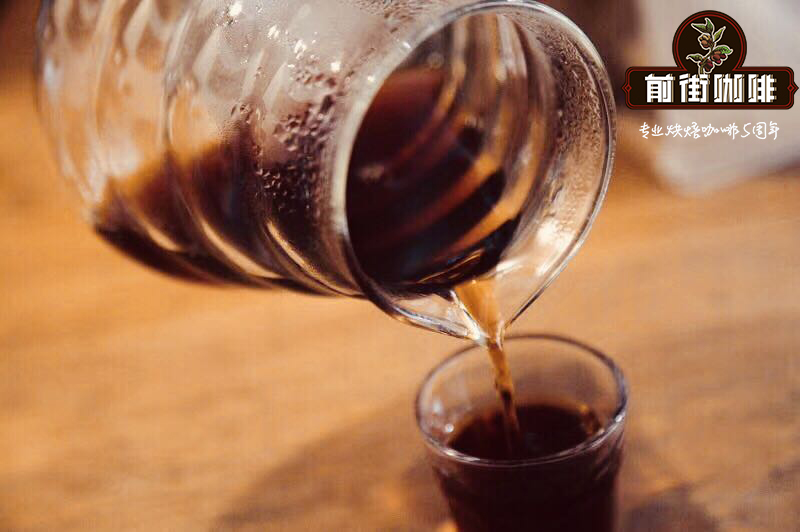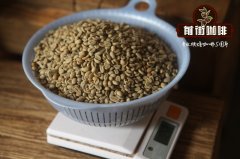What is Indian coffee? The reason for the story of Indian monsoon Malaba coffee

Professional coffee knowledge exchange more coffee bean information please follow the coffee workshop (Wechat official account cafe_style)
The story goes back to the 19th century, more than a hundred years ago, when India was a British colony. Coffee produced from India is shipped to England. Before the opening of the Suez Canal, it took a detour from India to Britain through the Cape of good Hope at the southern tip of Africa, across the Indian Ocean and Atlantic Ocean, and experienced a six-month sea voyage. Because of the sea breeze and the moist air on the sea for a long time, the coffee beans have changed from green to yellow and white when they arrived in Britain, and their volume has expanded, which is completely different from the original fresh beans. However, people are surprised to find that the "spoiled" coffee beans have a more unique flavor after roasting-the mellow thickness is higher, but the acidity is lower, and the different flavor is more tasteful than the ordinary Indian coffee.
Of course, in the world a hundred years later, the Suez Canal has long been opened, sea routes have been greatly shortened, more advanced and fast ships have been developed, and with the improvement of packaging technology, coffee beans have rarely suffered damp deterioration on board. But the taste of the classic "wind-stained coffee" is for many coffee drinkers.
So there is a new way to deal with it-monsoon coffee. Indian Malaba monsoon coffee, to be exact.
The picture shows India's Malaba monsoon coffee, and the upper right corner shows Ethiopia's washed raw beans. See the difference?
Because this unique treatment came into being in the Malaba region along the Indian Ocean in western India. In the tropical monsoon climate of the Indian mainland, there is a southwest monsoon blowing from the sea every year during the rainy season from June to September. Locally produced coffee beans are specially placed in a special open warehouse to accept the warm and humid sea breeze, and in the process the coffee beans are constantly stirred to ensure uniform acceptance of sea breeze and moisture. The whole treatment lasted almost throughout the rainy season, lasting for 3 to 4 months, and finally the coffee beans changed from green to yellowish white, which looked like "old beans" after being drenched in the rain or aged for a long time, and because they were exposed to moisture for a long time, its volume is also more expanded. Finally, the unprocessed beans are manually selected and re-bagged, and the whole processing process is completed.
After this process, coffee beans are equivalent to being "pickled" by sea breeze and moist air in the rainy season, the original acidity decreases, while the mellow thickness increases, and produces a special earthy flavor and dried fruit flavor, and sometimes has a unique spice flavor, which is difficult to feel in coffee from any place of origin.

It is said that when Britain transported tea at that time, it was due to the damp fermentation of tea leaves during the long sea transportation, which affected the preference of the British for black tea at that time, and also made the later famous English black tea. The formation of monsoon coffee is similar to that of black tea. However, according to the way of processing, monsoon coffee is more inclined to our Pu'er tea, experiencing artificial "aging", reducing the green astringency and acidity of the coffee and achieving a different mellow taste.
Important Notice :
前街咖啡 FrontStreet Coffee has moved to new addredd:
FrontStreet Coffee Address: 315,Donghua East Road,GuangZhou
Tel:020 38364473
- Prev

Wet planing with unique regional flavor | wahana estate style of Vahana Manor, Sumatra Coffee
Professional coffee knowledge exchange more coffee bean information please pay attention to the coffee workshop (Wechat official account cafe_style) unique regional flavor of the wet planing method | Sumatra Coffee Vahana Manor wahana estate flavor and taste? This small batch of Sumatran Longberry comes from Wahana Estate, which, as its name implies, is a long, thin bean-shaped variety. It is said that due to the same name
- Next

Unique sun treatment | Sumatran Coffee Wahana Wahanna Manor Manning's planting story?
Professional coffee knowledge exchange more coffee bean information please follow the coffee workshop (Wechat official account cafe_style) unique sun treatment | Sumatran Coffee Wahana Wahanna Manor Manning planting story? What kind of flavor do you have? Sumatra is the largest island in Indonesia and the sixth largest in the world. Wahana is a coffee estate located in Sumatra.
Related
- Detailed explanation of Jadeite planting Land in Panamanian Jadeite Manor introduction to the grading system of Jadeite competitive bidding, Red bid, Green bid and Rose Summer
- Story of Coffee planting in Brenka region of Costa Rica Stonehenge Manor anaerobic heavy honey treatment of flavor mouth
- What's on the barrel of Blue Mountain Coffee beans?
- Can American coffee also pull flowers? How to use hot American style to pull out a good-looking pattern?
- Can you make a cold extract with coffee beans? What is the right proportion for cold-extracted coffee formula?
- Indonesian PWN Gold Mandrine Coffee Origin Features Flavor How to Chong? Mandolin coffee is American.
- A brief introduction to the flavor characteristics of Brazilian yellow bourbon coffee beans
- What is the effect of different water quality on the flavor of cold-extracted coffee? What kind of water is best for brewing coffee?
- Why do you think of Rose Summer whenever you mention Panamanian coffee?
- Introduction to the characteristics of authentic blue mountain coffee bean producing areas? What is the CIB Coffee Authority in Jamaica?

